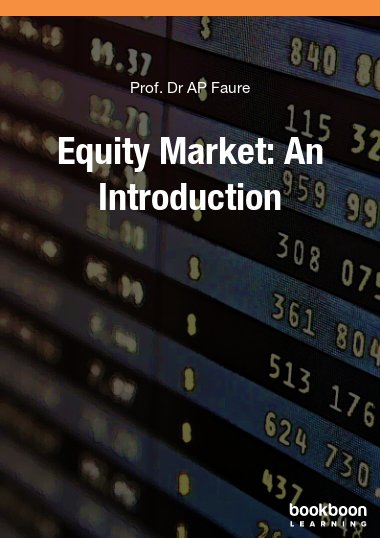The equity market is a prominent member of the capital market. The only other member is the long-term debt market. The money market does not feature here, but it does pair with the bond market to form the debt market. The equity market plays a significant role in the economy. It provides perpetual capital (= ordinary / common shares and in some countries perpetual preference / preferred shares exist) and long-term capital (in most countries = the definition of preference / preferred shares). Long-term capital is essential for the development of commerce and industry and infrastructure, and no country can develop sustainably at a high level without the existence of entrepreneurs who have access to long-term / perpetual capital. Capital is provided in the primary equity market and traded in the secondary equity market. The latter is more efficient if the market is formalised, listing requirements are adequate and surveillance of members and listed companies is effective.

الوصف
المحتوى
التعليقات
- Context & Essence
- Learning outcomes
- Introduction
- The financial system in brief
- The money and bond markets in a nutshell
- Essence of the equity market
- Statutory backdrop to shares and share market
- Equity derivatives
- Summary
- Bibliography
- Instruments
- Learning outcomes
- Introduction
- Ordinary shares
- Preference shares
- Negotiable instruments representing equity
- Summary
- Bibliography
- Investors
- Learning outcomes
- Introduction
- Ownership distribution
- Motivation for holding equity
- Statutory environment for investors
- Measures of return
- Other concepts of return
- Risks faced in holding financial assets
- Risk predisposition
- Measurement of risk in the financial markets
- Relationship between risk and return
- Risk and return: the record
- Summary
- Bibliography
- Primary market
- Learning outcomes
- Introduction
- Economic function of primary market
- The law, the equity exchange and listing
- Motivation for listing (advantages)
- Disadvantages of being listed
- Listing requirements
- Types of companies that list
- Listed products other than shares
- Methods of listing
- Steps involved in a listing
- The prospectus
- Underwriting of a share issue
- Other sources of primary issue of listed equity
- Summary
- Bibliography
- Secondary market
- Learning outcomes
- Introduction
- Definition
- Significance of secondary market
- Structure of secondary equity market
- Participants in secondary market
- Trading system: automated trading
- Mechanics of dealing (from point of view of client)
- Clearing and settlement
- Cost of dealing
- Equity market indices
- Equity market efficiency
- Summary
- Bibliography
- Valuation
- Learning outcomes
- Introduction
- Balance sheet valuation approach
- Discounted cash flow approach
- Relative valuation approach
- Equity valuation, inflation and interest rates
- Summary
- Bibliography
- Endnotes
